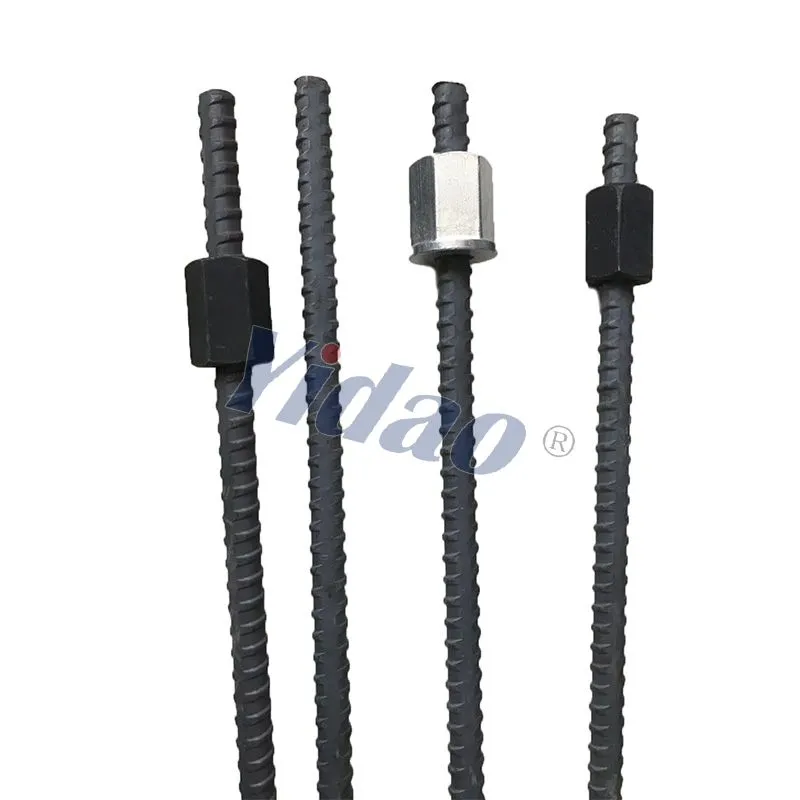In the construction and manufacturing industries, hot rolled steel bars are a fundamental component, offering a multitude of benefits that make them indispensable. This article delves into the numerous advantages of using hot rolled steel bars, covering aspects from cost efficiency to structural integrity. Whether you're an engineer, architect, or builder, understanding these benefits is crucial for optimizing your projects.

Hot rolled steel bars are renowned for their cost-effectiveness. The process of hot rolling involves heating the steel above its recrystallization temperature, allowing it to be shaped and formed easily. This method is less expensive than cold rolling due to lower operational costs and the absence of delays caused by reheating. Consequently, hot rolled steel bars are an economical choice for large-scale projects.
The production of hot rolled steel bars is less complex, reducing the overall cost. Since the steel is rolled at a high temperature, it can be shaped without needing extensive pressure or multiple passes through the rollers. This efficient process lowers the labor and energy costs, making hot rolled steel bars an attractive option for budget-conscious projects.
Hot rolling is suitable for producing steel bars in high volumes. The process allows for the continuous production of long steel sections, which is ideal for large construction and infrastructure projects. This capability ensures a steady supply of materials, reducing lead times and supporting project timelines effectively.
Hot rolled steel rebar exhibit versatility across various applications, from construction to industrial machinery. Their strength and malleability make them suitable for a wide range of uses.
In construction, hot rolled steel bars are commonly used for structural frameworks, reinforcement in concrete, and the fabrication of beams and columns. Their ability to withstand significant stress and load makes them ideal for supporting large structures, ensuring safety and stability.
The automotive industry benefits from hot rolled steel bars due to their durability and ability to be shaped into various components, such as axles, shafts, and chassis parts. The robustness of hot rolled steel ensures that these components can endure the harsh conditions and stresses experienced during vehicle operation.
Manufacturers use hot rolled steel bars to create machinery and equipment that require strength and precision. The material's ease of fabrication and welding capabilities allow for the production of reliable and efficient machines, contributing to the overall productivity of manufacturing processes.
Hot rolled steel bars boast superior mechanical properties that enhance their performance in demanding applications. These properties include high strength, ductility, and toughness, which are critical for the reliability and longevity of the material.
The hot rolling process refines the grain structure of the steel, enhancing its overall strength. This increased strength is particularly beneficial for structural applications where the material must support heavy loads and resist deformation.
Ductility refers to the material's ability to deform under tensile stress without breaking. Steel reinforcing bars exhibit excellent ductility, allowing them to be bent, twisted, or stretched without compromising their structural integrity. This property is essential for applications that require flexibility in design and construction.
Toughness is the ability of a material to absorb energy and plastically deform without fracturing. Hot rolled steel bars have high toughness, making them resistant to impact and abrasion. This characteristic ensures that the material can withstand harsh environmental conditions and mechanical stresses over time.
One of the standout advantages of hot rolled steel bars is their ease of fabrication and welding. These properties streamline the construction and manufacturing processes, reducing time and labor costs.
Hot rolled steel bars can be easily cut, drilled, and shaped to meet specific project requirements. This flexibility simplifies the fabrication process, allowing for the efficient production of custom components and structures.
The hot rolling process produces a material with uniform composition and grain structure, which enhances its weldability. Welded joints in hot rolled steel bars are strong and reliable, ensuring the structural integrity of the finished product. This attribute is particularly valuable in construction and manufacturing, where welded connections are common.
Hot rolled steel bars are widely available and come in standardized sizes and grades. This standardization ensures consistency in quality and performance, facilitating their use in various applications.
Manufacturers produce hot rolled steel bars in a broad range of sizes and grades, catering to diverse project needs. Whether you require small-diameter bars for intricate components or large sections for structural beams, there is a hot rolled steel bar to meet your specifications.
Standardized production processes ensure that hot rolled steel bars meet stringent quality standards. This consistency in quality is critical for applications that demand high performance and reliability, giving engineers and builders confidence in the material's capabilities.
The durability and longevity of hot rolled steel bars are significant advantages, particularly in applications exposed to harsh environments or heavy usage.
While hot rolled steel is typically not as corrosion-resistant as cold rolled steel, it can be treated with protective coatings to enhance its durability. These treatments prevent rust and corrosion, extending the lifespan of the material in outdoor or corrosive environments.
Hot rolled steel bars require minimal maintenance, making them a cost-effective choice over their lifecycle. Their inherent toughness and resistance to wear and tear ensure that structures and components made from hot rolled steel will endure for many years with little need for repair or replacement.
Hot rolled steel bars offer a multitude of advantages that make them an excellent choice for various applications in construction, manufacturing, and beyond. Their cost-effectiveness, versatile applications, superior mechanical properties, ease of fabrication and welding, availability, and durability position them as a preferred material for professionals in these fields. By leveraging the benefits of hot rolled steel bars, projects can achieve greater efficiency, reliability, and longevity.
Previous: What is square wire mesh?
Next: Architectural Crimped Woven Mesh With Rigid Structures For Decoration
Copyright:@2020-2021
Comments Please sign in or sign up to post.
0
0 of 500 characters used